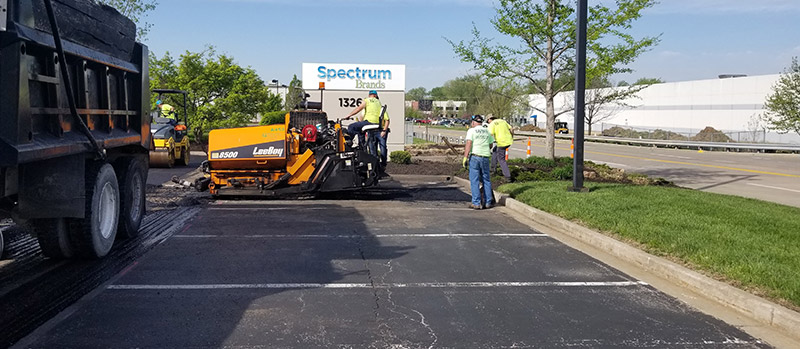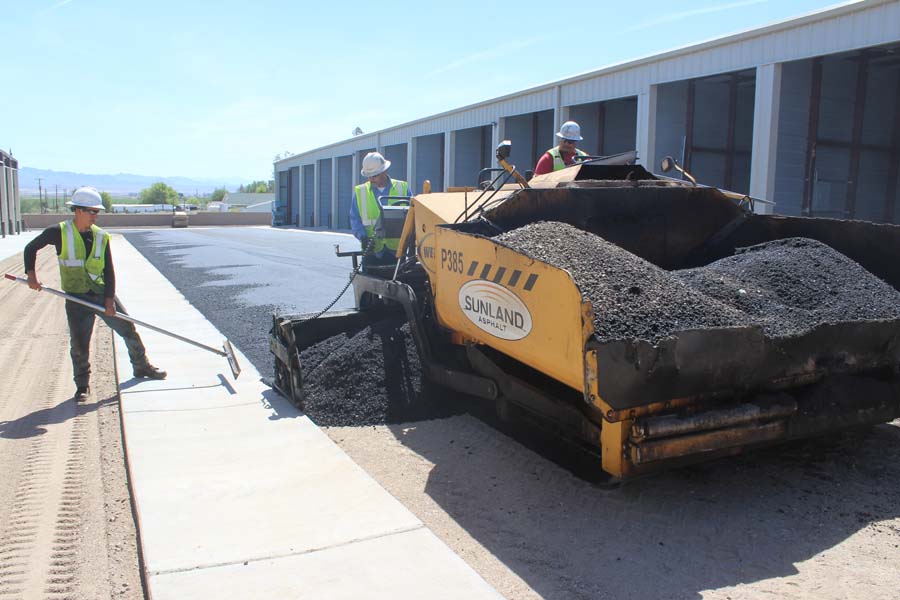Some Known Details About A1 Professional Asphalt & Sealing Llc
Some Known Details About A1 Professional Asphalt & Sealing Llc
Blog Article
Examine This Report on A1 Professional Asphalt & Sealing Llc
Table of ContentsThe Buzz on A1 Professional Asphalt & Sealing LlcThe A1 Professional Asphalt & Sealing Llc PDFsGetting The A1 Professional Asphalt & Sealing Llc To WorkThe smart Trick of A1 Professional Asphalt & Sealing Llc That Nobody is DiscussingExamine This Report about A1 Professional Asphalt & Sealing Llc

The oil in a car engine is not just oil. The REOB has all the ingredients that were in the waste oil as well as the wear metals from the engine (mainly iron and copper).
However, by making lots of blends using different REOB examples and different asphalt binders, the variants greatly can be averaged out. Several States supplied samples of known REOB structure to TFHRC researchers, who assessed the examples to contrast the percentage of included (understood) REOB to the discovered (tested) quantity. The analyses revealed an equivalent percentage of added and located REOB.
Not known Details About A1 Professional Asphalt & Sealing Llc
They received an overwhelming response. The TFHRC researchers assessed 1,532 samples from 40 States, one Canadian province, and two Federal Lands Freeway departments. They assessed each example twiceamounting to more than 3,000 analyses. None of those States understood that the asphalt they were acquiring contained REOB. One State insisted its samples had no REOB.
Of the 1,532 samples examined, 12 percent had REOB, and some included substantially high degrees of it at 1020 percent. The highest degree was 34 percent in a sample from Texas, which TxDOT had utilized in a patching substance. This screening also exposed the visibility of phosphoric acid in 11 percent of the examples, and 2 percent included ground tire rubber.
2 years earlier at TRB's yearly meeting, the Federal scientists held an REOB workshop and offered the findings of their research laboratory analyses to a standing room-only group. Some agencies do not particularly outlaw REOB, they do impose physical examinations that prevent its useeffectively a ban. Others do not ban it by requirements, however have agreements with asphalt vendors to prevent using REOB
Everything about A1 Professional Asphalt & Sealing Llc
Ohio and Texas restriction levels to much less than 5 percent of the asphalt. To establish a trusted examination approach that all States can make use of, the TFHRC scientists established up a round-robin examination plan.
The individuals are testing the examples independently making use of the guidelines offered by the TFHRC researchers. The output will be a proposed AASHTO test approach that any State can take on and make use of.
The sidewalk with REOB, which lies 0.6 mile (1 kilometer) from the sidewalk without REOB, has the same subgrade, traffic density, and climate. Nonetheless, the segment of Highway655 with 5 to 10 percent REOB revealed significant breaking. In this instance, the presence of REOB was click to find out more the identified root cause of breaking at a reduced temperatures.
"In our experience in Canada, also little amounts of 23 percent can be a problem." Similarly, a section of examination pavement in Minnesota (MN1-4) found to have REOB additionally split too soon. The sidewalk executed well for the very first 3 to 4 years, however after that began to fracture. This pavement is also based on low temperatures.
All about A1 Professional Asphalt & Sealing Llc
The examinations were not considerable, however they showed that at degrees of 6 percent or more, the tensile toughness of the asphalt went down significantly. At a level of 3.5 percent REOB, the variation in the physical examination approaches was more than the result of REOB. It was challenging for researchers to analyze whether REOB was existing. https://www.openstreetmap.org/user/a1asphaltseal.

One binder parameter thought about is the difference between the low temperature essential requirements temperature for rigidity (S) in the flexing beam of light rheometer and the flexing light beam rheometer creep incline (m-value) kept in mind as Tcritical. Two independent research study groups, one from AASHTO and the other from the Asphalt Institute, wrapped up that even more research is required on the use of REOB in asphalt.
Previously, all asphalt screening determined engineering properties such as tightness. These examinations do not show what products had been included to the asphalt. One example obtained during the TFHRC research had a really weird analysis. The example had the complying with examination outcomes: Superpave PG 64-28 with a heat quality of 67.3 Tcritical on the bending beam of light rheometer was 6.7 degrees Celsius.

What Does A1 Professional Asphalt & Sealing Llc Do?
These results demonstrate there are weaknesses in the standardized engineering testing protocols that might be manipulated. The manufacturer might have a financial advantage and the item passes all the standardized examinations, however the product may not be valuable to making certain long-term performance. To resolve this problem and the expansion of new asphalt ingredients and extenders, TFHRC is starting a study program to utilize portable spectroscopic gadgets, x-ray fluorescence spectroscopy, and Fourier change infrared spectroscopy to make it possible for evaluations to be done in the area instead of having to take examples back to the lab.
Report this page